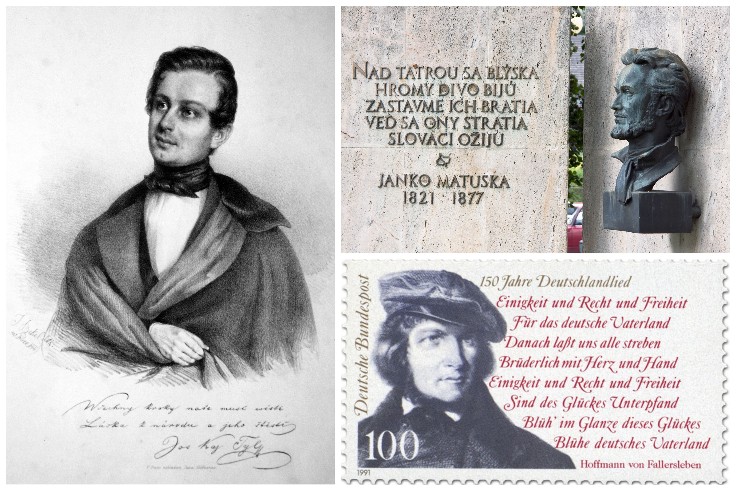Státní hymny: Německo, Česká republika, Slovensko
1834 / 1841 / 1844

In the 19th century, numerous songs became symbols of national identity and patriotism. Some achieved such significance that they later became national anthems established by the state. Today's national anthems of Germany, the Czech Republic and Slovakia were also created during the national movement in the first half of the 19th century and already served as official state anthems of the German Empire and the Czechoslovak Republic in the period between the two world wars. It is interesting to note that all three songs were written within ten years of each other: The Czech "Where is my fatherland?" was first sung in 1834 during the premiere of the play "Fidlovačka" ("The Cobbler's Feast") by playwright Josef Kajetán Tyl, "The Song of the Germans" was composed in 1841 by August Heinrich Hoffmann von Fallersleben on the then English island of Heligoland, and the lyrics of the Slovak anthem "Over the Tatras it flashes" were written in 1844 by the Romantic poet Janko Matúška. The melodies were found differently: František Škroup composed a melody especially for Tyl's text , Hoffmann von Fallersleben used a melody by Joseph Haydn from the song "Gott erhalte Franz, den Kaiser" (1797), which was also the Austrian imperial anthem, while Matúška borrowed from a Slovak folk song. In all three songs, only one of several stanzas is used as the national anthem. While in the Czech and Slovak case nothing changed (during the time of Czechoslovakia both songs were used together as a common anthem), it was different in Germany: at first the first stanza ("Deutschland, Deutschland über alles...") was sung as the national anthem. Hoffmann von Fallerleben's paraphrase of the common fatherland of the Germans, which he wanted to portray as larger than individual German states, was misused by the National Socialists to underpin their expansion. For this reason, the third stanza ("Einigkeit und Recht und Freiheit...") was chosen as the anthem in the postwar period instead, because it emphasizes above all those values to which the Federal Republic of Germany wanted to adhere.